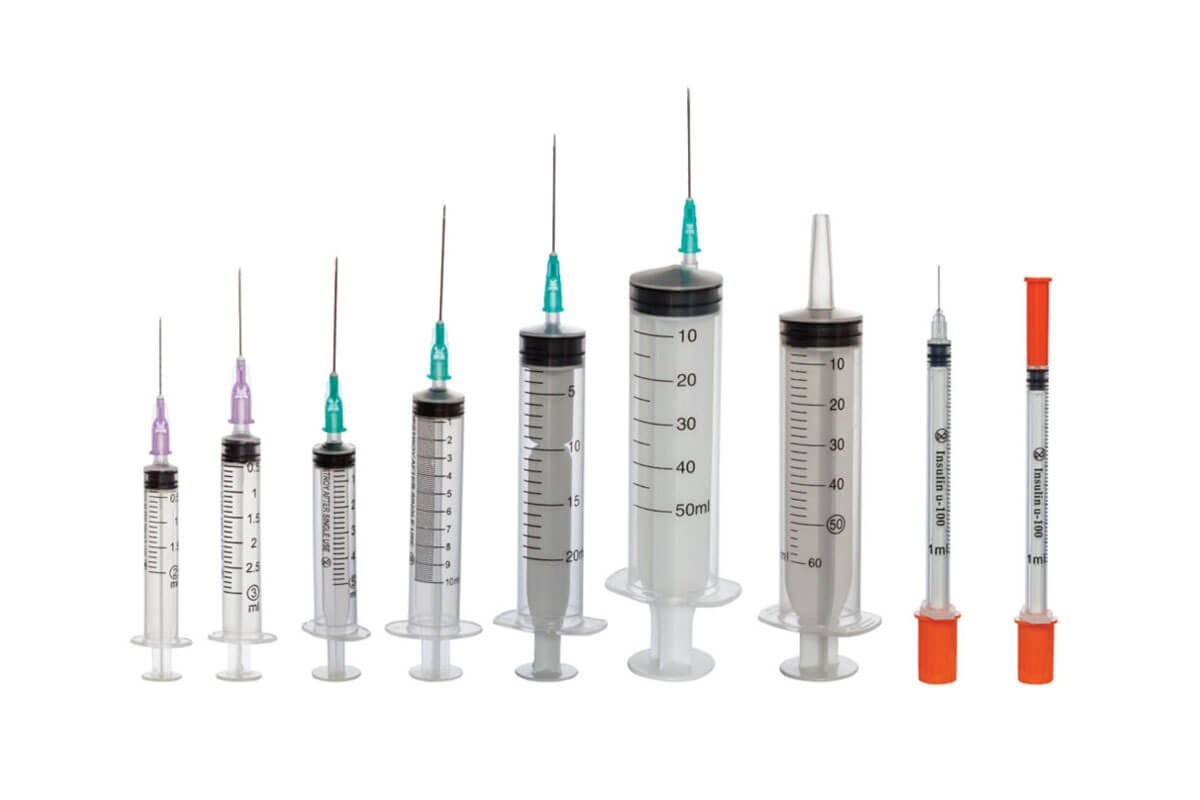Hypodermic Syringe Manufacturer & Supplier
Introduction to Hypodermic Syringes
Hypodermic Syringe play a crucial role in modern medicine, enabling safe and precise administration of medications. From general healthcare to specialized procedures, these syringe manufacturer ensure sterility, accuracy, and ease of use. Over time, syringes have evolved from glass-based reusable models to disposable, single-use options, enhancing patient safety and efficiency.
Why Choose Our Hypodermic Syringes?
We are a globally recognized hypodermic syringe manufacturer providing high-quality, sterile, and precision-engineered medical devices. Our syringes are designed for safe and efficient drug administration across various medical applications.
Our Hypodermic Syringe Features:
- Luer Lock & Luer Slip Options – Ensures a secure connection for leak-free injections.
- Ultra-Sharp Stainless Steel Needles – Minimizes patient discomfort and ensures smooth penetration.
- Medical-Grade Plastic Barrels – BPA-free and highly durable.
- Transparent Barrel with Clear Graduation Marks – Ensures accurate dosage measurements.
- Color-Coded Needle Hub – Easy size identification.
- Latex-Free & DEHP-Free – Reduces allergic reactions.
- Silicone Lubricated Plunger – Smooth and controlled operation.
- Available in Various Sizes (1ml – 50ml, 18G – 30G needles) – Suitable for all medical settings.
Our Hypodermic Syringe Variants
1. Luer Lock Hypodermic Syringe
Secure, threaded connection prevents accidental needle detachment.
Ideal for high-pressure injections.
2. Luer Slip Hypodermic Syringe
Simple friction-fit connection for quick and easy use.
Cost-effective option for routine medical injections.
3. Disposable Hypodermic Syringe
Single-use, pre-sterilized, and non-toxic.
Designed for precise and safe medication delivery.
4. Glass Hypodermic Syringe
Reusable and ideal for laboratory & specialized medical use.
Compatible with multiple needle sizes.
Applications in Hypodermic Syringe
General Medicine – Used for vaccinations, insulin injections, and pain management.
Surgical Procedures – Essential for local anesthesia and post-operative medication administration.
Veterinary Medicine – Safe and precise injections for animals.
Laboratory & Research – Used for sample collection, drug testing, and medical research.
Emergency & Critical Care – Vital for rapid administration of life-saving drugs.
Luer Lock vs. Luer Slip – Which One to Choose?
| Feature | Luer Lock | Luer Slip |
|---|---|---|
| Connection Type | Threaded, secure fit | Friction-fit, push-on |
| Best for | High-pressure injections | Quick and easy applications |
| Risk of Detachment | Very low | Slightly higher |
| Cost | Slightly higher | More cost-effective |
Hypodermic Syringe Industry-Leading Quality & Compliance
Certifications & Safety Standards:
Our syringes comply with ISO 13485, CE, WHO-GMP, and FDA standards, ensuring the highest levels of safety, precision, and sterility.
Advanced Manufacturing Process:
We employ fully automated assembly lines with rigorous quality control testing, including: ✔ Leak-proof testing to ensure no fluid loss. ✔ Needle strength testing to prevent breakage during use. ✔ Sterility assurance testing to meet global medical safety standards.
Global Supply & Distribution:
Trusted by hospitals & healthcare providers in 60+ countries
Fast shipping & bulk order availability
Dedicated customer support for seamless procurement
Frequently Asked Questions (FAQs)
How do I choose the right hypodermic syringe size?
The syringe size depends on the medication volume and intended use. For insulin injections, a 1ml syringe is ideal, whereas for general medication administration, 5ml-10ml syringes are commonly used.
What is the difference between Luer Lock & Luer Slip syringes?
Luer Lock syringes provide a secure, threaded connection for high-pressure injections, while Luer Slip syringes have a friction-fit design for quick and easy use.
Are hypodermic syringes sterile?
Yes, all our syringes are sterile, single-use, and pre-packaged to ensure safety and infection control.
How should I store unused syringes?
Store syringes in a cool, dry place away from direct sunlight. Ensure packaging remains sealed to maintain sterility.
Order Hypodermic Syringes in Bulk
We cater to hospitals, clinics, and medical distributors worldwide. Contact us for bulk orders, pricing, and samples.
📞 Phone: +91-11-4573-3068
📧 Email: sales@larsmedicare.com
🌍 Website: www.larsmedicare.com


